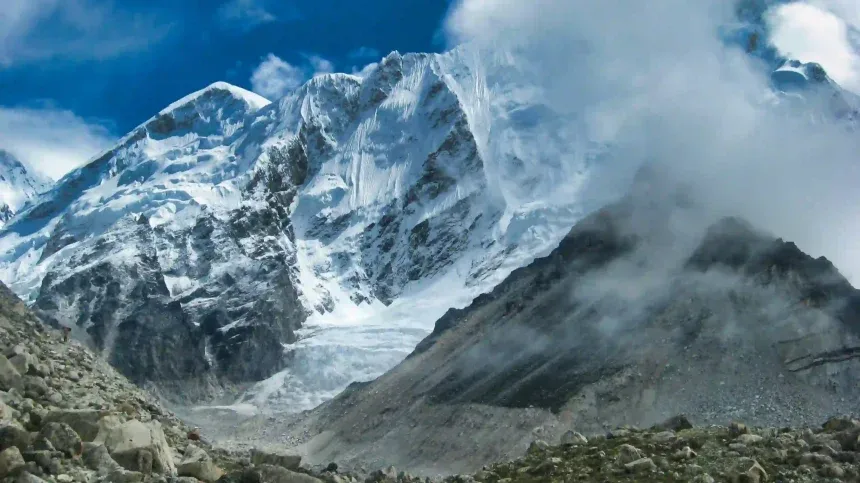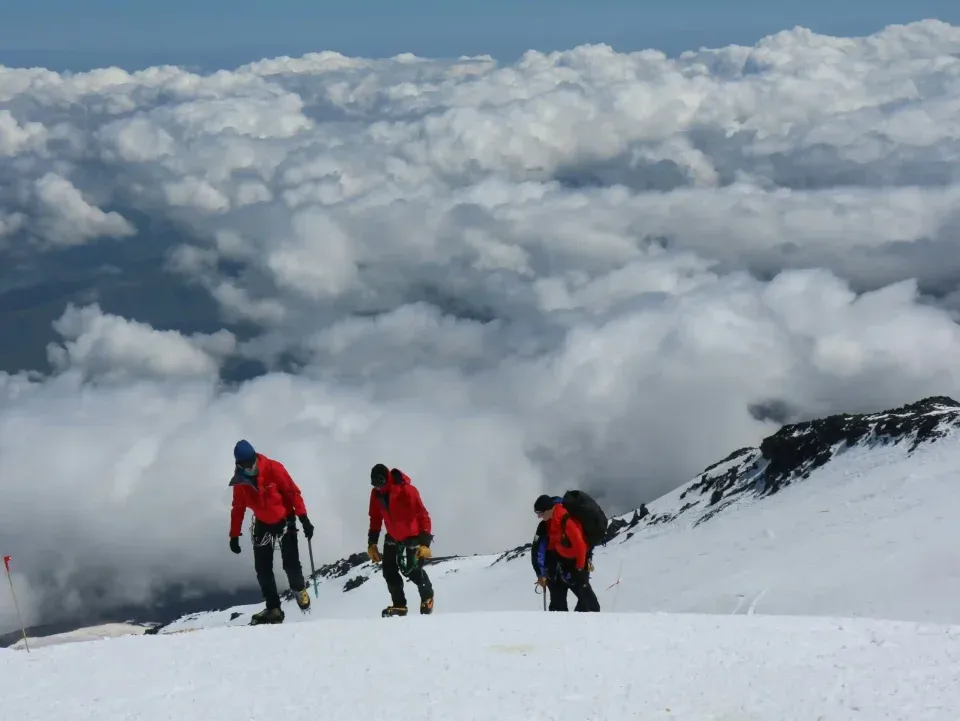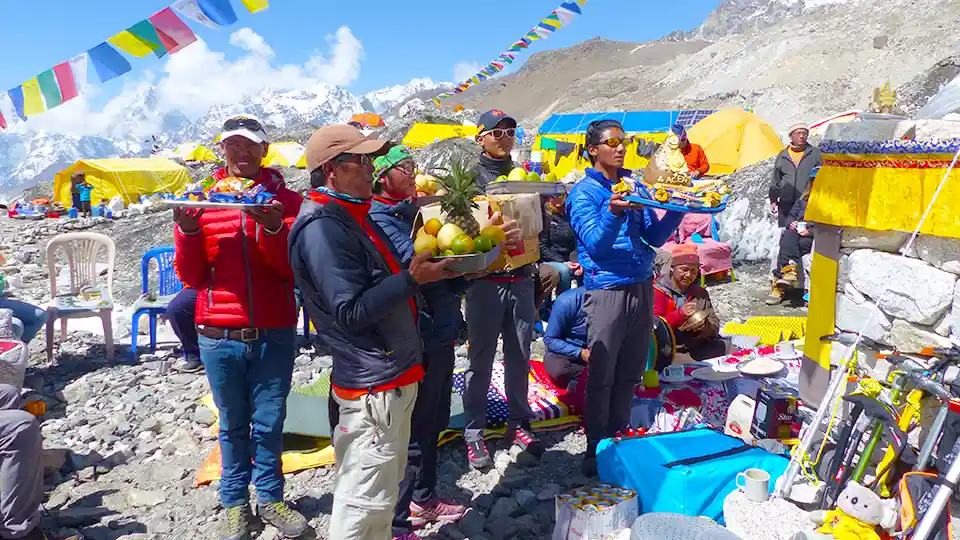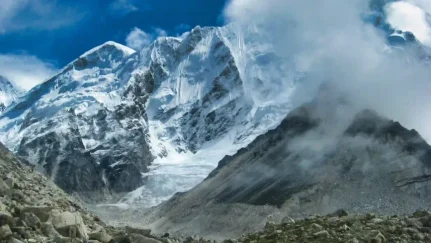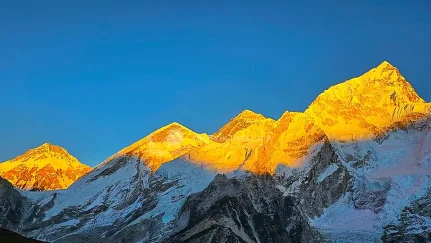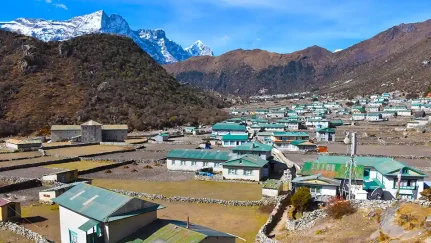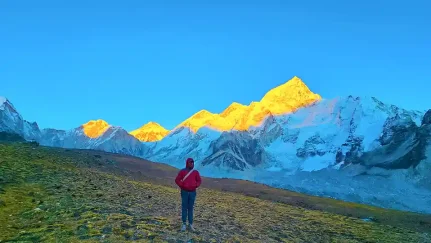The Everest route is about to be changed after 10 years. The search for a new route was planned for the expedition in the spring of 2024. According to the Director of the Tourism Department, Mr. Rakesh Gurung, the Icefall Doctors successfully climbed Camp 2 from Camp 1 via a new route on April 17. Gurung mentioned that the doctors successfully climbed Camp 2 using a new route that they discovered near Lho La Peak.
The new route to Camp 2 is established near a previously used route, which was established before 2014. Due to the instability of ice and snow, the attempt to find a new Everest route has failed multiple times in the past few years. After many failed attempts, the Icefall Doctors have successfully discovered and established a new Everest route. It took the exploration team 10 days longer than anticipated.
This opens the Everest route for Sherpas to begin building camps 1 and 2 and for members to begin their acclimatization rotations shortly thereafter. Everest permits lag last year’s record of 478. As of April 15, 2024, the government issued 274 permits to foreigners compared to 338 in 2023 as of the same date; this is 20% less. While bad for business, this is good for the mountain.
The expert exploration team that was assigned to this task observed the state of the snow for almost 15 days and did the risk analysis. The movement of ice and snow was very active and unstable, so they had to search for a new Everest route. The exploration team, consisting of 8 members, including technicians and staff, is expected to reach the summit of Mount Everest within one week.
Everest route from Camp 1
Reports say that the new Everest route for climbing is closer to the west shoulder, which consists of hanging seracs. These ice bulges consistently release a tiny amount of ice, which is enough to deposit tons of ice on top of the icefall. That’s why the doctors did everything they could to get close to Nuptse, which lies on the right side of the climbers. Ascending at a quick pace is advisable while climbing icefalls, but the new Everest route requires more diligence.
Doctors have noticed five potential areas where climbers could face difficulty as the glacier is unstable. Everyone will need to be focused and get through those areas quickly.
Who are the icefall doctors?
Icefall doctors are highly skilled mountain climbers, consisting mostly of Sherpas. They play a crucial part in getting climbers aiming to summit Mount Everest ready for the treacherous Khumbu Icefall. Their role is to undertake tasks such as securing ropes, installing ladders over crevasses, and making safe routes for upcoming climbers.
Purpose of changing route
The main reason for changing the previous Everest route is to make mountain climbing more comfortable. The team of Icefall Doctors works on searching climbing routes and setting up proper infrastructure. The exploration team handles the job of setting up and placing structures for placing ladders, ropes, and other equipment. For this reason, this pre-climbing task is considered critical and risky. A group of experienced and expert climbers is deployed for this task.
In collaboration with the Department of Tourism, since 2054 BS, the Sagarmatha Pollution Control Committee (SPCC) has been building routes to the second base of Mount Everest. After the SPCC prepares the route leading to the second camp to climb Mount Everest, the construction of the route above it is done in conjunction with the climbing professionals.
What are Camp 1 and Camp 2?
After journeying from the Everest base camp, comes camp one. Camp One of Everest refers to the first camp of Everest that climbers use to prepare for their climb after spending some time in Base Camp getting used to the higher altitude. It is located on the flat plains at the head of the icefall at an altitude of 6,065 meters (19,900 ft).
Camp Two is the second camp of Everest, which lies at an altitude of 6400 meters (20,997 ft). Climbers use it as a vital staging area to eat, rest, and finish acclimatizing before continuing upward.
The journey from Camp 1 to Camp 2 requires climbing the western Cwm glacier. Climbers have to navigate through icy terrain and crevasses. It is very physically demanding and requires a lot of physical effort, teamwork, and respect for safety protocols.
Department’s Camp Office at Base Camp
To regulate the Everest expedition, the Tourism Department has established an office at the Everest base camp. The department has given this responsibility to Officer Khil Lal Gautam, who has already climbed the Everest Summit. The regulation team will observe and regulate all activity that occurs during the whole climbing season.
According to the Tourism Department’s latest report, this season alone, 26 teams consisting of a total of 274 climbers are permitted for the Everest expedition. Among those 274 climbers, 53 are female climbers. Climbers from many nations have taken permission to climb the Everest expedition. The list goes as follows:
- From USA-59
- From China-38
- From Japan-19
- From India-17
- From Russia-16
- From England-15
The Tourism Department has stated that this season, 68 teams consisting of 612 climbers have taken permission for the expedition of 23 peaks.

